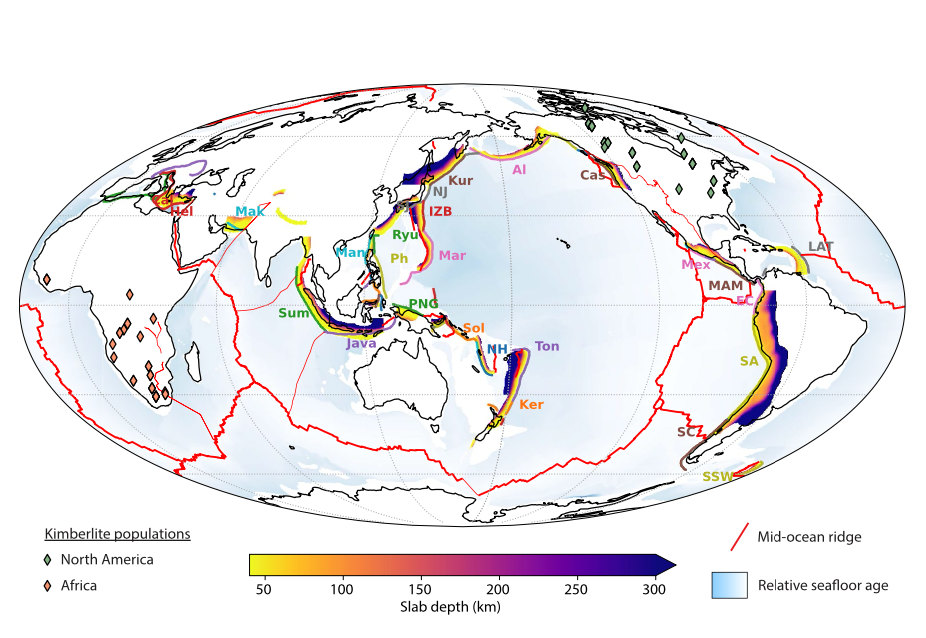Kimberlites are sourced from thermochemical upwellings which can transport diamonds to the surface of the crust. The majority of kimberlites preserved at the Earth’s surface erupted between 250 and 50 million years ago, and have been attributed to changes in plate velocity or mantle plumes. However, these mechanisms fail to explain the presence of strong subduction signatures observed in some Cretaceous kimberlites. This raises the question whether there is a subduction process that unifies our understanding of the timing of kimberlite eruptions. We develop a novel formulation for calculating subduction angle based on trench migration, convergence rate, slab thickness and density to connect the influx of slab material into the mantle with the timing of kimberlite eruptions. We find that subduction angles combined with peaks in slab flux predict pulses of kimberlite eruptions. High rates of subducting slab material trigger mantle return flow that stimulates fertile reservoirs in the mantle. These convective instabilities transport slab-influenced melt to the surface at a distance inbound from the trench corresponding to the subduction angle. Our deep-time slab dip formulation has numerous potential applications including modelling the deep carbon and water cycles, and an improved understanding of subduction-related mineral deposits.
![]()

